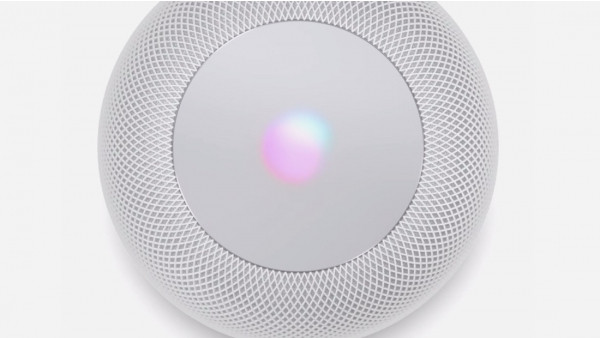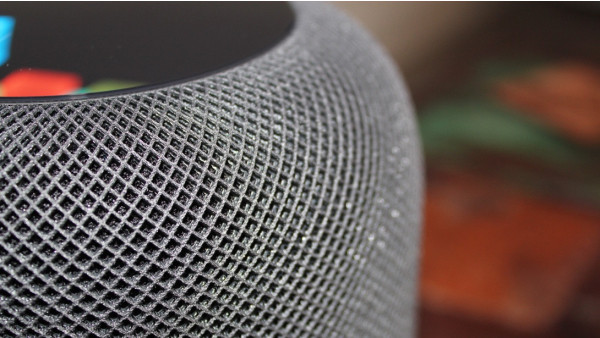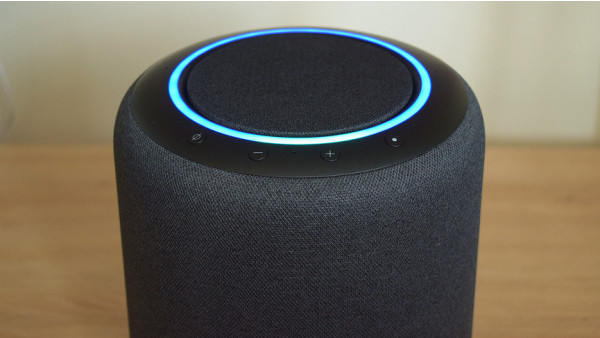Here are 30 of the best Apple HomePod and Siri Tips and Tricks.
10 min read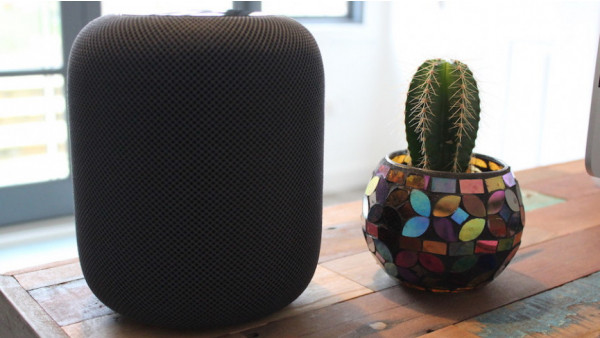
Apple HomePod Mini is playing the music, with its 360-degree audio. Siri will turn on your smart lighting and heat your home.
Apple’s intelligent speakers are capable of so much more.
Check out these 30 Siri tricks, tips and features. Also don’t miss our list of essential HomePod Commands.
1. Play Spotify on HomePod
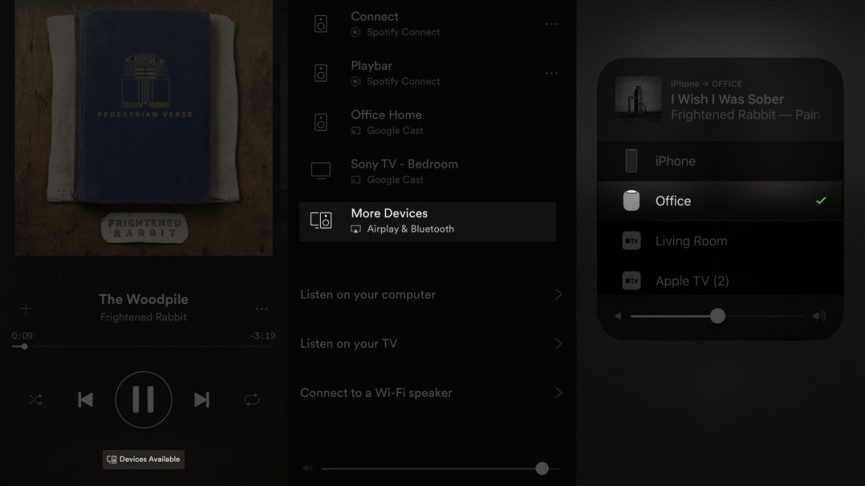
Pandora is now available for HomePod users in the US. You can use Siri to browse its digital catalog and set Pandora as your default music service.
Spotify is not one of the streaming music partners for HomePod, despite it being confirmed in 2020 during a briefing by The Ambient. Apple said that they “would love” to work with Spotify. “
Spotify and other streaming service providers that are not fully integrated can be used, but there is a solution.
Open the app and select the song. Select More devices at the bottom and choose your HomePod. AirPlay 2 allows you to use the HomePod with other AirPlay 2 speakers such as the Sonos One and the Libratone Zipp 2
2. Play radio stations other than Beats 1.
This method works for any radio station with a web-based application, such as BBC Sounds, TuneIn or a radio station’s iOS app.
You can select your HomePod by selecting the AirPlay icon in the app.
3. Create stereo HomePod sounds
Music lovers may advise you to disregard claims of 360-degree audio and the like. For the purists’ music experience, a stereo set-up is required, with left and right pairs delivering the sound artists intended.
HomePod is a great way to enjoy multi-room audio and other features.
You’ll be asked to pair a HomePod with another HomePod if you add a new HomePod to an existing HomePod. HomePods can only be paired with the same model, so there is no Mini or original mixing.
AirPlay 2 allows you to pair your HomePod with your Sonos speakers for multi-room audio.
4. HomePod allows you to send and receive messages.
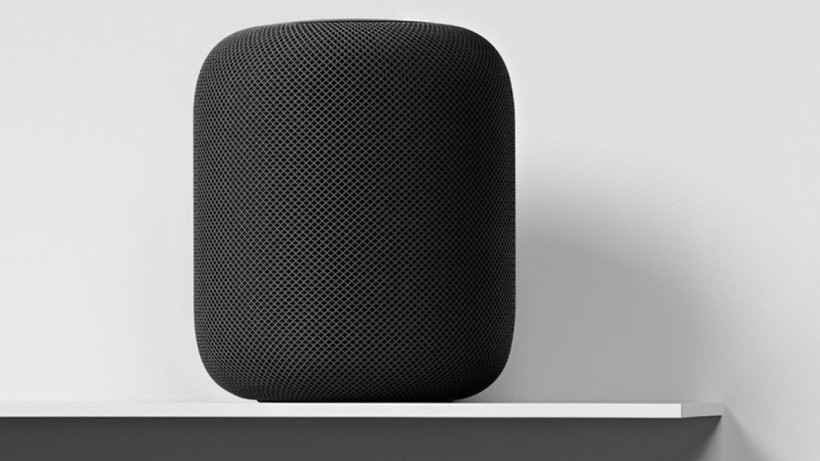
Greasy hands? You can’t find your phone because you are too lazy to look for it? You can send a text message using the HomePod. Say , “Hey Siri send a message [X]”, then tell the assistant what you’d like it to say. Before it sends the message, it will ask if you are ready.
If you have Personal Requests enabled, you can have Siri read you your most recent text messages. Go to the Home app, and then select the HomePod’s settings. Select Personal requests by selecting the icon that has your name under People. Siri will allow you to ask questions like “Read a message from [X].”
Below it, you’ll find a second option to add authentication. This will stop others from sending you messages or causing havoc on your account.
5. HomePod and Siri: Make calls with HomePod
HomePod’s most recent feature allows you to ask Siri to place and receive calls through the speaker. First, ensure that your HomePod has the latest software. You’ll first need to enable personal requests. Scroll down to the Siri section of your HomePod’s settings. Turn it on.
You can then say “Hey Siri call [Name]”.. You can say “Hey Siri answer my phone” before you pick up the phone and “Hey Siri hang up” after. You’re on your iPhone but can’t hear the other person. You can transfer an incoming call to HomePod. Tap on the iPhone’s audio icon and choose the HomePod device from the list.
6. Siri can be used as a HomePod interpreter
You’re wondering how to say something? Siri is able to translate into German, Italian Spanish and Mandarin.
Ask Siri “Hey Siri, what does [word] mean in [language]?” Expand your vocabulary by asking Siri “How do you say [word] in [language]?”
7. Change Siri’s voice on your HomePod
Siri’s British Accent is robotic and can become very annoying after a few minutes. The American accents, both male and female, are much more natural. However the Australian accent is the most personable.
You can change the settings of Apple’s personal assistant by going to the iPhone or iPad Home app and pressing the tile for a long time or using 3D Touch. Apple’s digital assistant can be muted if desired.
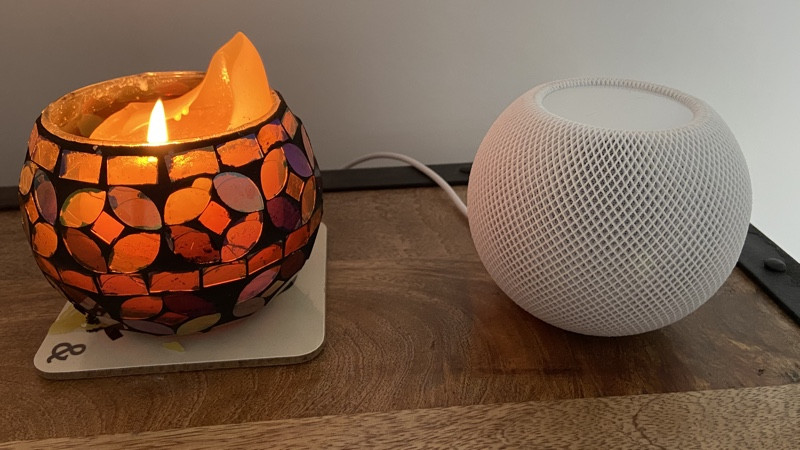
8. Learn music trivia
Siri’s musicologist abilities aren’t just limited to rewinding, fast-forwarding and skipping tracks. Apple’s digital Assistant is a music expert – it has all the information (well, Wikipedia at least).
You can ask Siri questions while listening to music, such as “Hey Siri who is the drummer in this band?” “… What year was this album first released? “… Tell me about this artist. Siri makes every day a learning day.
9. Siri can automate your home automation system
Siri will be able to control any HomeKit enabled kit using your HomePod. It’s a lot more cool and natural to get Siri working in your smart home by creating scenes it can control.
Set up a routine for bedtime, where Siri locks the door, turns off the lights and activates the alarm. The scene can be started by saying “Hey Siri it’s time to go to bed,”. Siri can activate any scenes you create in the Home app.
10. Control HomePod Music with an iPhone
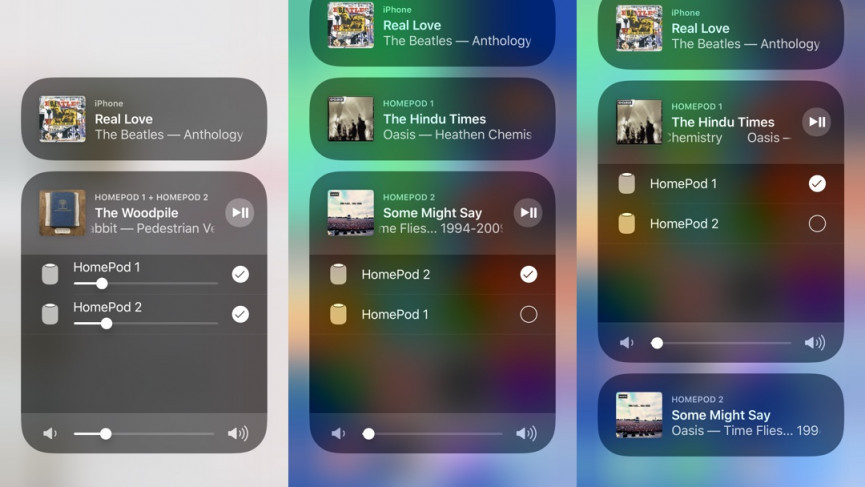
HomePod’s voice control is a big selling point, but sometimes using your phone to play music makes more sense. Apple has got you covered.
Click the AirPlay icon and select your HomePod from the iOS Music App. You can also access the Music widget from the lockscreen. Again, tap the AirPlay icon, and follow the steps above.
You can also 3D Touch or long-press the music tile in the Control Center to get an overview of all the current music playing on your Apple devices. You can also choose to stream a song on your HomePod by selecting the HomePod section.
AirPlay 2 allows you to pair two HomePods easily via the AirPlay menu, or pair a HomePod with a speaker that supports AirPlay 2.
11. HomePod as TV Speaker
TV speakers are a joke – it’s a simple fact. While a HomePod wasn’t designed as a TV Speaker, it can fill a room with sound when watching movies or TV shows.
HomePod is now compatible with TVs other than Apple TV. AirPlay 2 will soon be available on TVs such as Samsung, LG and Vizio.
Hold down the play/pause buttons on your Apple TV remote to select the HomePod. You can make it the default speaker by going to the Apple TV settings and selecting Audio output.
Apple TV 4K is even more impressive. As part of Apple’s new ‘Home Theater with Apple 4K’, the first-generation HomePod can be utilized to create an immersive surround-sound experience. Virtual 2.1, 5.1, 7.1 and Dolby atmos are all available.
You can only enjoy Atmos surround sound when watching content via your Apple TV4K. You cannot plug in your HomePod straight into your TV to get Atmos on all your TV shows.
Apple TV supports all major streaming services, including Netflix, Prime and HBO. Disney+, Hulu and Disney+ are also supported.
12. HomePod allows you to read the latest headlines.
Say “Hey Siri” and Siri will tell you what is in the news. Your smart speaker will read the latest news to you – from a variety of sources.
Good news: these readings can be customised to your region. For example, BBC News or Sky News for the UK.
13. Siri can help you with your spelling.
You’re not sure how to spell the word? Siri has your back. Ask Siri “Hey Siri how do you spell [word]?” Ask your smart speaker to spell out the word.
14. Boost the security of HomePod
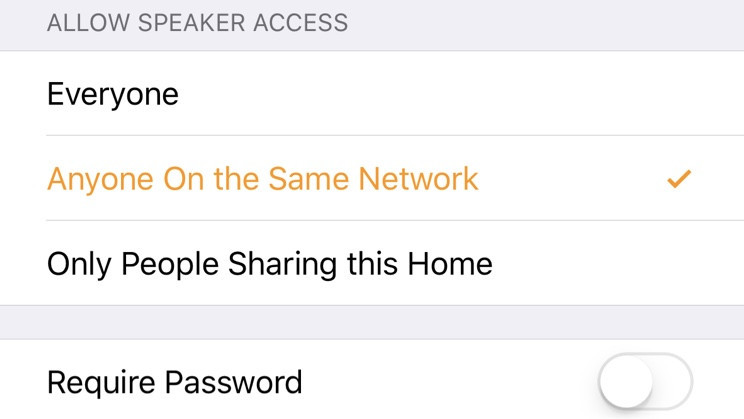
There has been a lot of talk about the lack of multi-user support on HomePod. While there’s not a hidden iPhone settings menu to change that, there is an important multi-user menu, centered around AirPlay.
You can restrict the streaming of your speaker to only people who are in your Apple Home, or on your network. You can add a password if you wish, or leave it open for anyone with an iPhone to stream music.
15. Block explicit content from your HomePod
You’ll need to open the Home app on your iPhone to access more advanced HomePod settings. You’ll find options for setting alarms, changing some default settings, and blocking explicit content in the HomePod menus.
The restrictions you can choose depend on the country that you are using. You can block music in the States that has a “Parental Advisory” label from the Recording Industry Association of America. Music with bad words.
16. Factory reset your Apple HomePod
You can hard reset your HomePod if it is not responding, is acting up or if you are looking to sell or give it to someone else.
There are two ways to reset your HomePod. On the Home app tap and hold the HomePod tiles, then select “Details”, scroll down to the bottom, and choose “Remove accessory”.
You can reset the HomePod by unplugging, waiting for five seconds and then plugging it in again. Hold your finger on top of the HomePod for another five seconds until the white spinning lights turns red. Siri will tell you that your HomePod’s reset is near when you continue to hold your finger down. After three beeps you can lift your index finger.
17. Add a song into an Apple Music Playlist
You can ask Siri to add a song to a playlist by saying “Hey Siri, Add this Song to [Name of Playlist]”and the song will be added to the end.
18. How to turn on the HomePod Siri tone
You may not notice Siri’s presence if your HomePod is on a shelf that is above your eye-level. The Siri tone could be helpful in this case.
You can turn this feature on by going to the HomePod settings app in your iPhone, and checking the Sound when Using Siri box.
19. HomePod can stream audio from Mac
AirPlay speakers are not listed in the Spotify app’s devices list. The Mac AirPlay menu only shows Apple TVs. You can still play Spotify or other audio from your Mac to your HomePod via AirPlay. Dive into your System Preferences. Choose Sound from the list and then select your HomePod for sound output.
20. Use HomePod as a hub for HomeKit
Here’s a simple tip that doesn’t require any effort from you. HomePod acts as a hub to HomeKit and lets you control smart HomeKit Appliances using Siri.
The good news is it will add itself automatically as a hub within the Home app. HomePod is more likely to be in the same place and so it makes sense to use it as your HomeKit Hub rather than an iPad. (Although an Apple TV still has some extra features).
HomePod Mini has thread connectivity.
21. Enable VoiceOver
Siri, Apple’s most accessible accessibility feature, can also be found on the HomePod. It will announce what controls you are touching.
To activate it, go to the HomePod Settings, scroll down and select voiceOver. This guide will help you learn more about the feature.
22. Siri can be your sous-chef
Siri can be a great help in the kitchen if you are like us. It’s hard to appreciate the value of voice assistants until you try to manually set a kitchen timer while flour is on your hands.
Ask Siri on your HomePod: “Hey Siri how many ounces is in a cup?” If you want to try something different, ask Siri “Hey Siri, how many ounces are in a cup?” “
23. Share HomeKit Access for HomePod
You may want to ensure that your family members can also use the HomePod.
You can add users to your Home app if you use your HomePod smart speaker as a hub for your smart home. This will allow them to control your smart speaker, and any devices that are paired with it, just like you. You’ll feel your responsibility almost disappear.
24. List of family groceries
It’s easy to make your entire family able to add to your grocery list. Click on the Settings app of your iPhone, then Reminders. Then click iCloud. Select family to give everyone access to your grocery list.
25. Siri will tell you what you want
Don’t hesitate to tell Siri “Hey Siri” if you like the music. Or “Hey Siri”, if you don’t. Siri will adjust the music that it plays based on what you like and dislike.
26. Multiple users can be added to the account
HomePod Mini and HomePod can now recognise individual voices of up to six users. This means that you will always receive your own information, such as calendars and music playlists, when you interact with them.
If you meet the criteria laid out in this document (updating to iOS 11, having Bluetooth enabled, and so forth), then you should receive a prompt for setting up your iPhone.
You can customize the way your HomePod interacts personally by going to the Home app and selecting Home settings. Then, select your home configuration and People.
27. HomePod Mini / HomePod can be renamed
You may not be aware of all the ways to customize your HomePod Mini or HomePod.
You can easily rename the HomePod smart speaker by long pressing on it in the Home app. Then tap on Setting and then tap the current title.
28. HomePod: Get Physical
HomePod’s smart speakers are controlled by voice commands, as well as physical touch and other Apple devices.
You can also use the volume control to play and pause music or Siri, double-tap a track to skip it, triple-tap a track to go backwards, and touch-and-hold to activate Siri.
29. Search for songs using their lyrics
Siri on the HomePod can identify songs by their lyrics, provided you don’t mishear them.
You can ask Siri to play a song by saying , “Hey Siri. What’s that song? It goes …”, followed by two or three lines to find a match. If you want, you can also request to hear it immediately.
30. You can use your HomePods to create multiple rooms
You can use Siri or your phone to transfer audio between rooms if you have more than one HomePod. This is very useful if you want to take your music with you from the kitchen into the living room.
You can configure multiple rooms by going to Control Center and pressing the tile with a long press.


